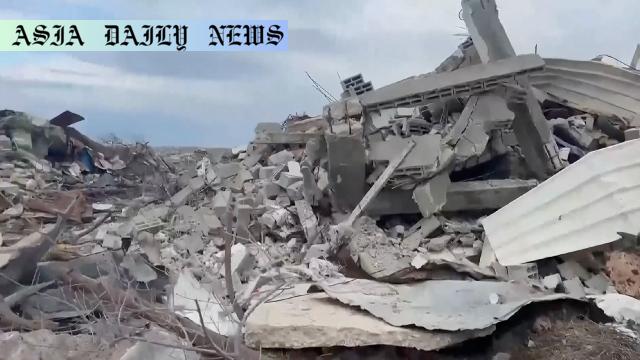Ceasefire: Israeli forces exit Gaza corridor as truce holds strong, but tougher negotiations for a lasting peace loom ahead.
Israeli forces exited a key military zone in Gaza as part of a temporary truce.
Hamas and Israel continue exchanging hostages and prisoners under the deal.
Future negotiations face uncertainty due to both sides’ firm stances.
Netanyahu emphasized eliminating Hamas prior to any lasting agreement.
Hamas vowed to continue its fight for an independent Palestinian state.

Israeli Forces Withdraw from Gaza Corridor
Recent developments in the Gaza Strip have sparked global attention, with reports confirming that Israeli forces have withdrawn from a strategically vital corridor dividing northern Gaza from its southern regions. This move aligns with the initial steps of a ceasefire deal brokered between Israel and the Islamic group Hamas. The withdrawal marks a temporary pause in hostilities, offering hope for a fragile six-week truce during which negotiations for a more permanent resolution will take place.
Exchange of Hostages and Prisoners Proceeds Smoothly
The first phase of the truce has centered on reciprocal hostage and prisoner releases. To date, Hamas has successfully released 33 hostages in incremental phases, in exchange for Palestinian prisoners held by Israel. Media reports highlighted that the process has been carried out smoothly, with the fifth round of hostage releases occurring this past Saturday. Such exchanges have not only underscored the complexities of the conflict but also offered fleeting moments of hope for families awaiting the return of loved ones.
Looming Challenges in the Next Phase of Talks
Despite this progress, substantial challenges remain as parties brace for what may be the most difficult phase of negotiations. The second stage of talks will aim to establish a permanent cessation of hostilities. However, stark differences in the parties’ objectives threaten to stall or even derail the process entirely. Israeli Prime Minister Benjamin Netanyahu has reiterated his firm stance, emphasizing that Israel’s ultimate goal is the elimination of Hamas from Gaza. He signaled in a statement last Saturday that a complete Israeli withdrawal and a permanent ceasefire are contingent upon achieving this goal.
Hamas’ Unwavering Commitment to Statehood
In stark contrast, Hamas continues to maintain its resolve to fight until it achieves its goal of an independent Palestinian state. In a statement issued Sunday, the group reaffirmed its goals, leaving little room for compromise—even as the truce holds. This divergence in vision for the region highlights the significant ideological schism that complicates any path toward lasting peace.
What Lies Ahead?
As the truce progresses, the international community watches closely. There is palpable skepticism regarding whether the fragile calm can transition into a more permanent peace. Analysts warn that entrenched positions on both sides could turn these negotiations into a protracted and contentious process. Furthermore, questions regarding the humanitarian situation in Gaza, international interventions, and regional stability remain critical to the ceasefire’s success—or its breakdown.
Broader Implications of the Ceasefire
The significance of this development extends far beyond Gaza. It serves as a reflection of the broader Israeli-Palestinian conflict, which continues to reverberate across the Middle East and beyond. The ceasefire negotiations may serve as a barometer for the feasibility of future peacemaking in the region. However, lasting peace will remain elusive unless both sides demonstrate a willingness to compromise and prioritize humanitarian concerns over political or ideological objectives.
Conclusion: A Fragile Glimmer of Hope
While the truce and initial exchanges of hostages and prisoners offer glimmers of hope, the road to lasting peace remains fraught with challenges. With entrenched positions on both sides and a history of prolonged conflict, meaningful progress will require bold steps, both diplomatically and on the ground. As the world watches, the stakes couldn’t be higher for both the people of Gaza and Israel as they grapple with the urgent need for lasting peace and stability.
Commentary
Balancing Optimism and Realism in the Ceasefire
The recent ceasefire agreement between Israel and Hamas introduces a mixture of cautious optimism and deep-seated skepticism. On the one hand, the smooth execution of hostage and prisoner exchanges provides a glimmer of hope in an otherwise protracted and bitter conflict. For the families of those freed, these moments of relief are undoubtedly monumental and emotionally charged.
The Fragility of the Current Progress
However, the broader outlook remains complex. Israel’s insistence on the complete removal of Hamas from Gaza is a steep demand that reinforces deep-seated hostilities, while Hamas’ unwavering goal of achieving full Palestinian statehood suggests a long and arduous negotiation process ahead. Such entrenched positions underscore how fleeting and delicate the current truce is. It risks further conflict unless both parties commit to concessions—a prospect that seems increasingly unlikely in the current political climate.
The Role of the International Community
It is pivotal for the international community to step up and play a more balanced role in the ongoing conflict. Mediation efforts that account for the perspectives of both Israelis and Palestinians could provide a much-needed buffer against more escalations. Aid organizations and peacebuilding initiatives must also be reinforced to address the mounting humanitarian crises within Gaza, exacerbated by years of blockade and violence.
Concluding Thoughts
Ultimately, the ceasefire represents both an opportunity and a test. The path forward requires courage, empathy, and significant compromises from all parties involved. While skepticism is warranted, moments like these remind us of the enduring hope for peace in one of the world’s most contentious regions. Sustained efforts and genuine dialogue—backed by global support—remain the only viable way forward.


